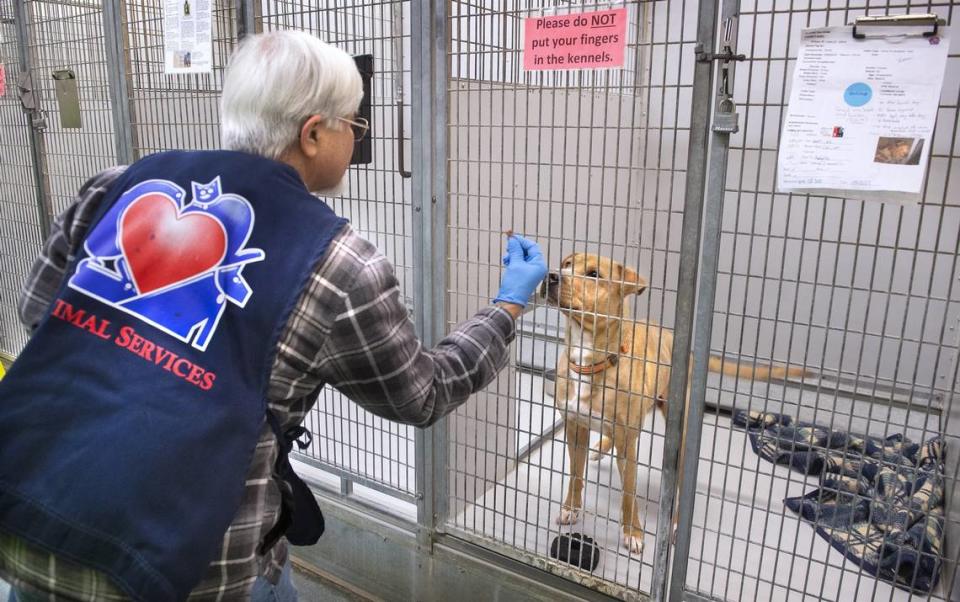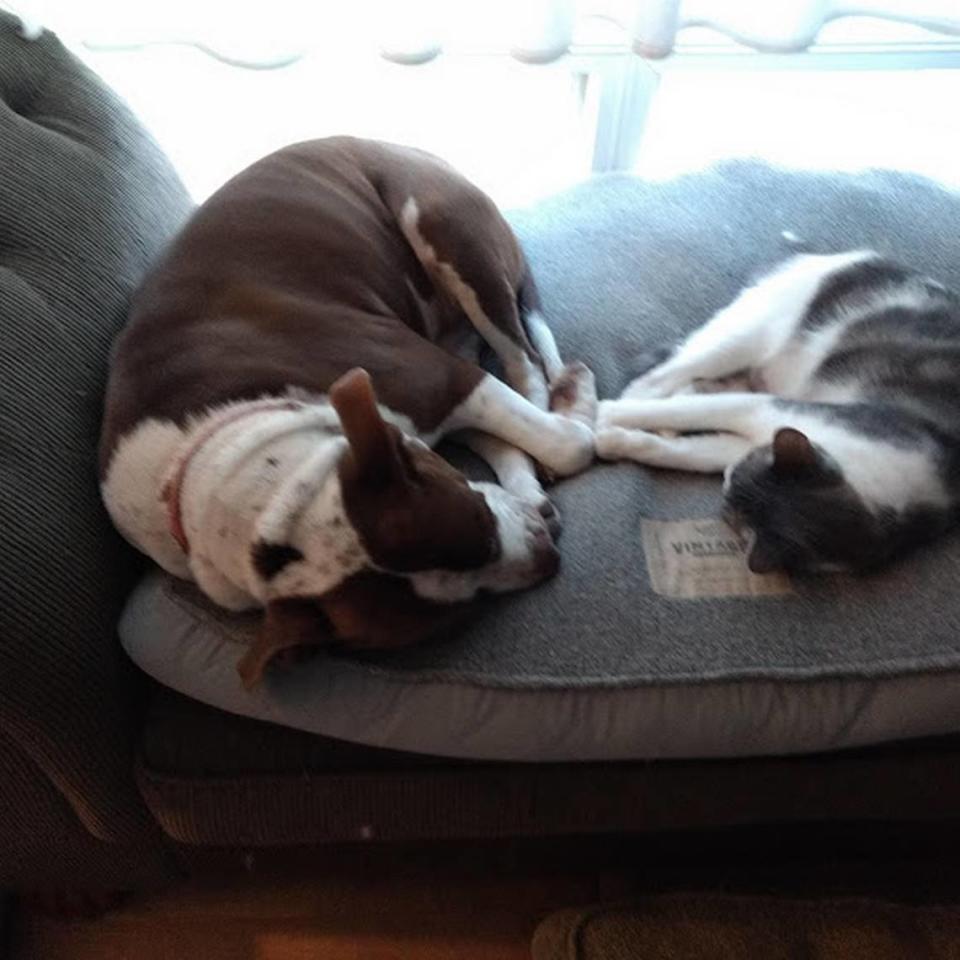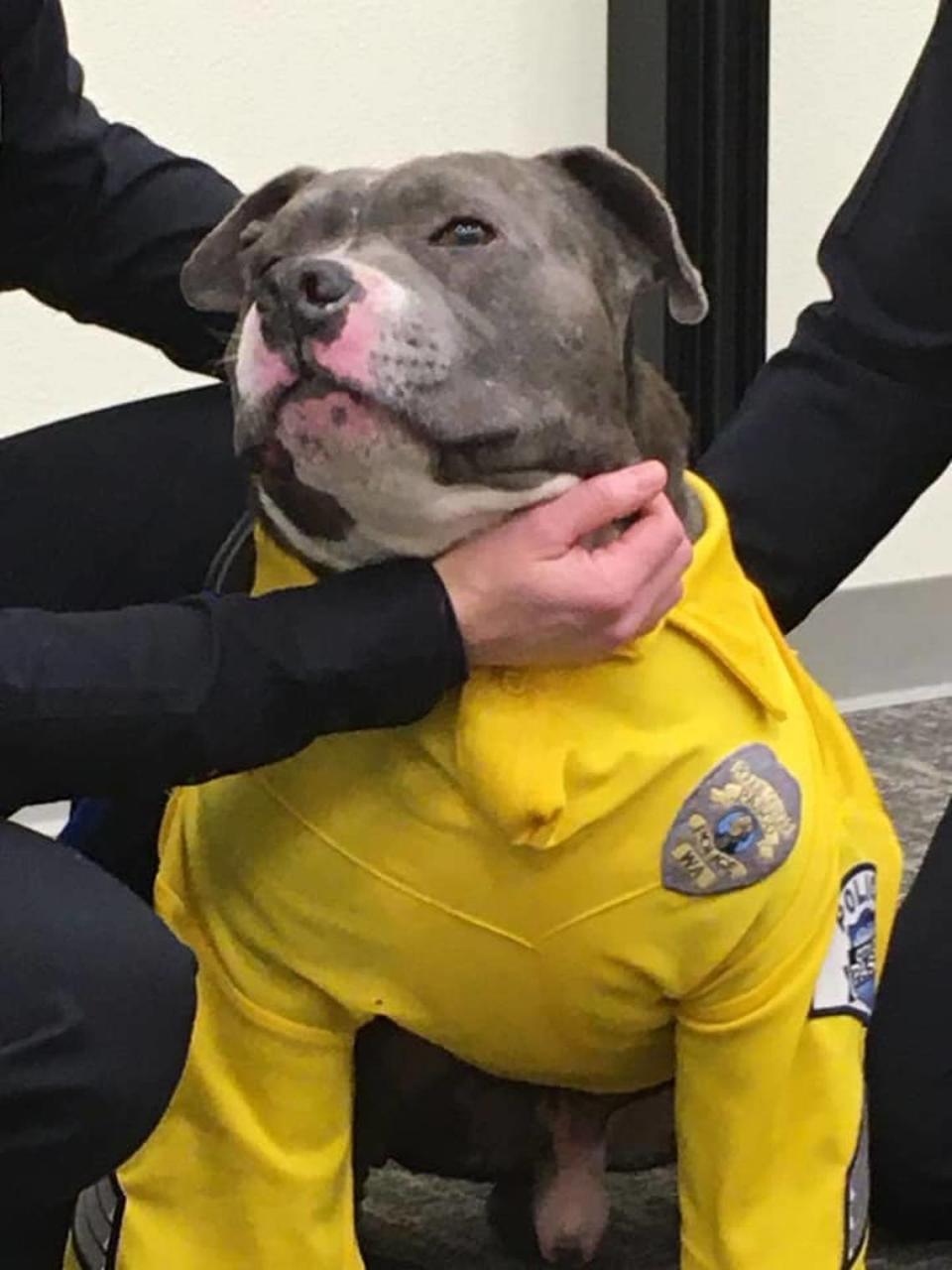After deadly Kennewick dog mauling, here’s an overview of Tri-Cities pit bull regulations
The recent death of a woman in Kennewick following a pit bull attack is one of several pit bull incidents in the Tri-Cities since the Washington Legislature restricted local government’s ability to uphold breed-specific regulations.
In 2019, the legislature passed the code update, to be enforced beginning in 2020. It placed strict guidelines on municipalities enacting any breed-specific regulations. Immediately deeming a dog as “potentially dangerous” solely because of its breed would have to be paired with exemptions — as would any policy that treats certain breeds differently than others.
“While the legislature recognizes that local jurisdictions have a valid public safety interest in protecting citizens from dog attacks, the legislature finds that a dog’s breed is not inherently indicative of whether or not a dog is dangerous and that the criteria for determining whether or not a dog is dangerous or potentially dangerous should be focused on the dog’s behavior,” states the Washington Legislature’s 2019 findings and intent for the updated policy.
This led to numerous cities and counties to reevaluate their policies. Kennewick was one of these, and ultimately repealed its pit bull-specific policies.

Three years later, a Kennewick woman who was a well-known business owner would die in a pit bull attack in an unincorporated part of Kennewick, making the attack in Benton County’s jurisdiction.
So what policies are in place throughout the greater Tri-Cities area regarding pit bulls since the legislation was updated in 2019?
Pit bull policies in Tri-Cities
The majority of Tri-Cities operates with regulations for owners of dangerous and potentially dangerous animals, which is determined by individual animal. Definitions of each can be found in the city and county codes linked below.
In Kennewick and Richland, permits are only required for those who have dangerous or potentially dangerous animals, not for any other pets. This is also the case in unincorporated Benton County, but dogs cannot remain at large. Richland also limits housing units to five pets each, requiring kennel permits for any more. West Richland limits pets per housing unit based on the kind of home, and Prosser limits households to three pets.
Permits to own a dangerous or potentially dangerous dog are more expensive than general pet ownership permits and come with more requirements. Many include surety bonds and home inspections, plus input from neighbors.
In some places, like Pasco, Prosser and West Richland, all pet owners are required to be licensed with the city or county they reside in. In these areas, owners of dangerous and potentially dangerous animals need a different permit from the generic one. Before the state added more guidelines, Pasco would not grant licenses to pit bull terrier owners.
However, in unincorporated Franklin County, permits are again only needed for potentially dangerous and dangerous dogs.
Pit bulls in Tri-Cities
There have been few severe dog attacks in the area since the legislation went into effect in 2020. The recorded major injuries and deaths involve pit bulls and a bulldog, of which there have been less than five instances, according to available records.
While each of these attacks made headlines, pit bulls were also in the news for positive stories, supporting the idea that the breed can be loving and non-threatening when trained and cared for properly. That idea was a driving factor in the Washington State Legislature decision in 2019 and is commonly referenced by animal rights organizations against breed-specific policy.

“The legislature further finds that breed-specific ordinances fail to address the factors that cause dogs to become aggressive and place an undue hardship on responsible dog owners who provide proper socialization and training,” the Washington Legislature findings and intent states. “The legislature intends to encourage local jurisdictions to more effectively and fairly control dangerous dogs and enhance public safety by focusing on dogs’ behavior rather than their breeds.”
One prime example of this was when a Pasco pit bull made national headlines after being named an honorary police dog as part of his bucket list. Eddie had been found abandoned in Benton City by animal control, who took him to the vet. They found out Eddie had an inoperable brain tumor and was given a year to live.
A local became Eddie’s foster parent, creating a bucket list for him and setting out to achieve as much of the list as possible before he died.

Other pit bulls and pit-mixes have been with the Go Team Therapy Dogs of the Tri-Cities, even being utilized to help victims through the Franklin County Prosecutor’s Office.
Staying safe around aggressive animals
Even the best, most well-behaved animals have bad days. If you find yourself in a situation where a dog is coming at you and appears to be aggressive, here’s what you should do.
Dogs can become aggressive for a plethora of reasons, according to the American Society for the Prevention of Cruelty to Animals. Each individual canine will have certain behaviors associated with different causes of aggression. While it can seem like their mood changed quickly, there are almost always warning signs before an aggressive dog begins to attack.
Watch for these warning signs for a dog that has become aggressive:
Becoming very still, rigid
Guttural bark
Lunging forward or charging without making contact
Using mouth/nose to move, control or hit the target
Growling, snarling
Showing teeth
Quick nips
These behaviors indicate the dog is aggressive and likely to attack further. If you observe them, there are certain responses recommended to protect your safety. If you can’t determine whether or not a strange dog appears aggressive, act on the side of caution and use these responses as well.
Stay calm, avoid sudden movements
Do not run, instead back away slowly
Distract with stimuli (water bottle, whistle, toy, treat)
Use clear commands like “No”
Avoid prolonged eye contact and showing your teeth, which dogs see as signs of aggression
Instinctual actions like yelling and hitting the dog will only further antagonize an aggressive animal
If necessary, protect your head and play dead
If the dog is trying to bite, put something between you and them, like a piece of clothing

